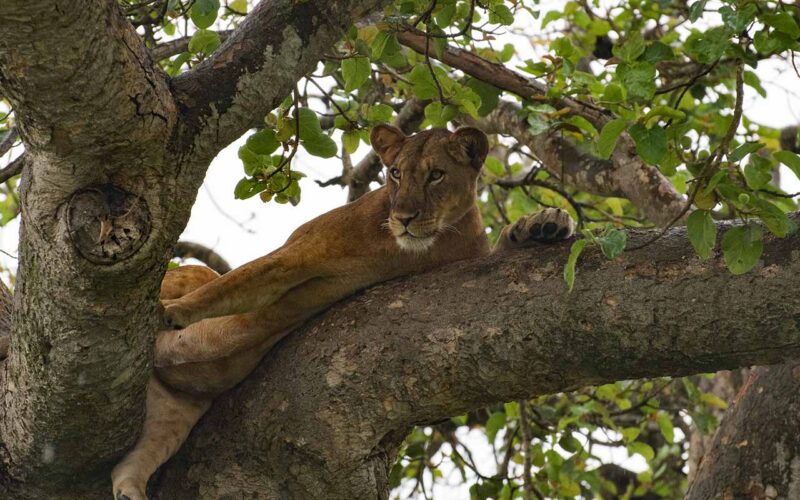The tree climbing lions of Ishasha are a popular highlight on a tailored Uganda wildlife safari through and across the wooded savanna plains of Queen Elizabeth National Park also the second largest of the country’s ten national parks. The characterful lion prides of Ishasha grasslands display a unique habitual behavior of lounging up in fig trees during the heat of the day, a rare attribute to these local cats. Elsewhere in most savanna wilderness parks, lions are known to seek a good shed during hot times of the day.
To safari enthusiasts and travelers, finding these unique lion prides lazily lounging up the sycamore fig trees is a spectacular sighting to behold on game viewing safari – an unforgettable wildlife experience!
Is it a Rare Behavior..?
The habitual behavior of lounging up in fig-trees during the heat of the day by Ishasha lion prides continues to baffle seasoned travelers and researchers for some time. This is not so with lions across Kasenyi plains, just north of Ishasha grasslands. Whereas it is a known fact that all cats do climb, yet this inherent behavior displayed by Ishasha lions is completely unique.
Then what is the explanation behind this frequent behavior displayed by Ishasha lions?
Over a course of time, wildlife behavior experts and seasoned safari guides leading wildlife experiences through Ishasha have attributed this inherent pattern to a genetic behavior passed on from one generation to another. The reasoning suggests that since lions are extremely social cats this behavior is learned at an earliest stage since they raise their young communally.
Uganda Wildlife ranger guides and research teams in Queen Elizabeth NP seem to agree that this unique behavior of Ishasha lions is simply an adaptation to escape the stinging insects common on these grassland plains. They note that the towering fig trees offer lions a vantage lookout point across their vast game-rich grasslands.
Elsewhere in our region, the similar behavior of Ishasha lion prides is displayed by a set of lion prides in Lake Manyara National Park in northern Tanzania.

What wildlife experts Say about this behavior
From our own experience and observations as naturalist guides, there is a common factor that is behind every behavior across the natural world, that is adaptability. Each species finds and adapts to its niche of habitat that meets its basic needs of food, safety which ensures its survival and reproduction after its own kind.
As our understanding of the natural world keeps developing, we recognize how fragile and important these wildernesses are and a wide diversity of flora and fauna they protect. With this recognition comes a need to promote responsible travel that leave less impact upon these ecosystems.
